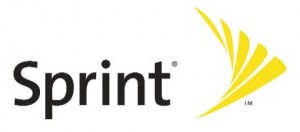 The FCC has granted Sprint’s request to allow it to deploy LTE services in its 800 MHz band assignments.
The FCC has granted Sprint’s request to allow it to deploy LTE services in its 800 MHz band assignments.
This is a big deal, both for Sprint and for LTE deployment as the de facto 4G-ish standard.
The FCC’s decision (found HERE) allows Sprint to re-purpose its Nextel 800 MHz spectrum (the old iDEN band) and bond it with Sprint’s 1900 MHz spectrum to create a ‘super LTE’ channel (my term, not theirs). Mathematically, this is represented by the complex formula:
zoom(800,000,000hz) x zoom(1,900,000,000hz) = ZOOM(WOW)MBs
Okay, maybe that’s not a legit math formula, but you get the idea. Bonding two high speed data bands is better than having two stand-alone high speed data bands.
This is a huge deal for Sprint as it continues to decommission its old Nextel iDEN services and sites as it deploys its Network Vision project. Network Vision is Sprint’s ‘one-box-does-all’ base station solution that allows it to communicate on multiple bands and using multiple signal protocols for both itself, and for electronic collocators it will charge to deploy on its upgrade cell sites.
For the LTE community, the Commission’s decision signals its intent to relax the existing technical rules that current prevent deployment of 4G-ish services in the cellular and ESMR bands. AT&T and Verizon will likely be even happier than Sprint by the ruling as it will give those firms a legal path forward to phase ultimately out cellular on 860 MHz and bond LTE with their other band assignments, especially 700 MHz.
(Bonding 700 MHz and 800 MHz services makes a lot of technical sense as the signal propagation of those two bands is similar, where the propagation of bonding 800 MHz to 1,900 MHz are dissimilar.)
For LTE-supporters, the Commission’s ruling is a much clearer path forward for dominance of that communications scheme given that the Commission’s door-opening will make LTE and LTE band-bonding even more important.